Finding the right software, such as a dictation machine , can make a significant difference in your daily workflow, whether you're looking to improve accuracy, save time, or enhance the overall efficiency of your practice.
This post explores the top choices for medical dictation software designed to meet the needs of doctors, nurses, and other healthcare providers.
Why Medical Dictation Software is Essential for Healthcare Professionals
Accurate and efficient medical documentation is critical for healthcare professionals, as it directly impacts patient care, legal compliance, and overall workflow. The ability to quickly capture and document patient information is crucial in a field where every detail matters.
Traditional methods like typing or handwriting notes can be slow and error-prone, often taking valuable time away from patient interactions.
This is where medical dictation software becomes essential. This technology allows professionals to speak their notes directly into the system, transforming speech recognition for medical professionals almost instantly. This speeds up the documentation process and reduces the likelihood of errors that can occur with manual entry.
Using dictation software means spending less time on paperwork and more time focused on patient care for doctors, nurses, and other healthcare providers. The efficiency gained through audio to text for healthcare significantly improves productivity, ensuring that all critical patient information is captured accurately and securely.
Top Medical Dictation Software Solutions
Today’s best medical dictation softwares offers powerful tools that improve how healthcare professionals manage their documentation.
These solutions excel at transcription, quickly and efficiently solving the task of converting voice to text in medical documentation. Transcription in medical dictation software ensures that all details are captured precisely, reducing errors and improving productivity.
The right dictation software can significantly enhance your workflow and documentation quality, whether you're a doctor, nurse, or other healthcare provider.
Transkriptor: Efficient and Accurate Medical Dictation
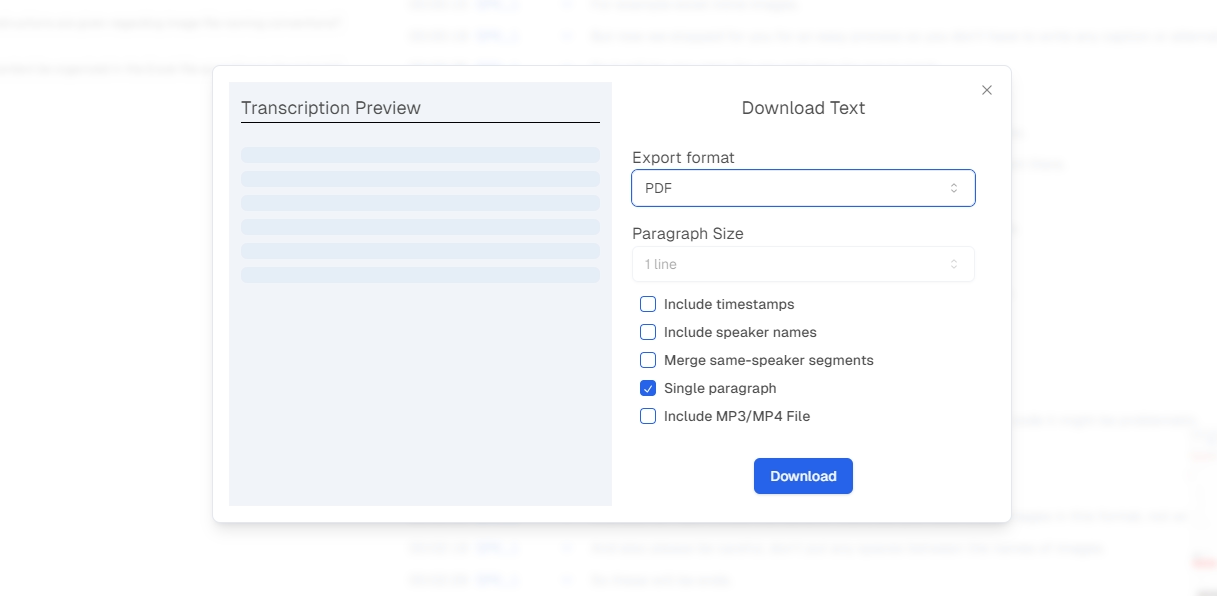
Transkriptor is an excellent choice for medical professionals seeking efficient and accurate dictation software.
Transkriptor is designed to streamline the documentation process and offers a user-friendly interface that makes it easy for healthcare providers to convert spoken words into precise written text. This ease of use is coupled with exceptional accuracy, ensuring that every word spoken is correctly transcribed into text, even when dealing with complex medical terminology.
One of the key advantages of Transkriptor is its automated transcription feature, which allows medical professionals to convert their voice recordings into text quickly and effortlessly. This automation saves time and reduces the administrative burden, allowing doctors and nurses to focus more on patient care.
The software’s advanced algorithms are finely tuned to recognize and accurately transcribe medical terms, minimizing the risk of errors and ensuring that documentation is precise and reliable. It is key for professionals to ensure that their notes, reports, and patient records are thorough and accurate.
Editing transcripts is also made simple with Transkriptor. The platform offers easy-to-use editorial tools that let users review and adjust the text, ensuring the final document is accurate and complete.
Unlock the efficiency and accuracy of Transkriptor for your medical documentation needs. Sign up now and see how it can enhance your workflow and improve patient care.
Dragon Medical One: Industry-Leading Speech Recognition
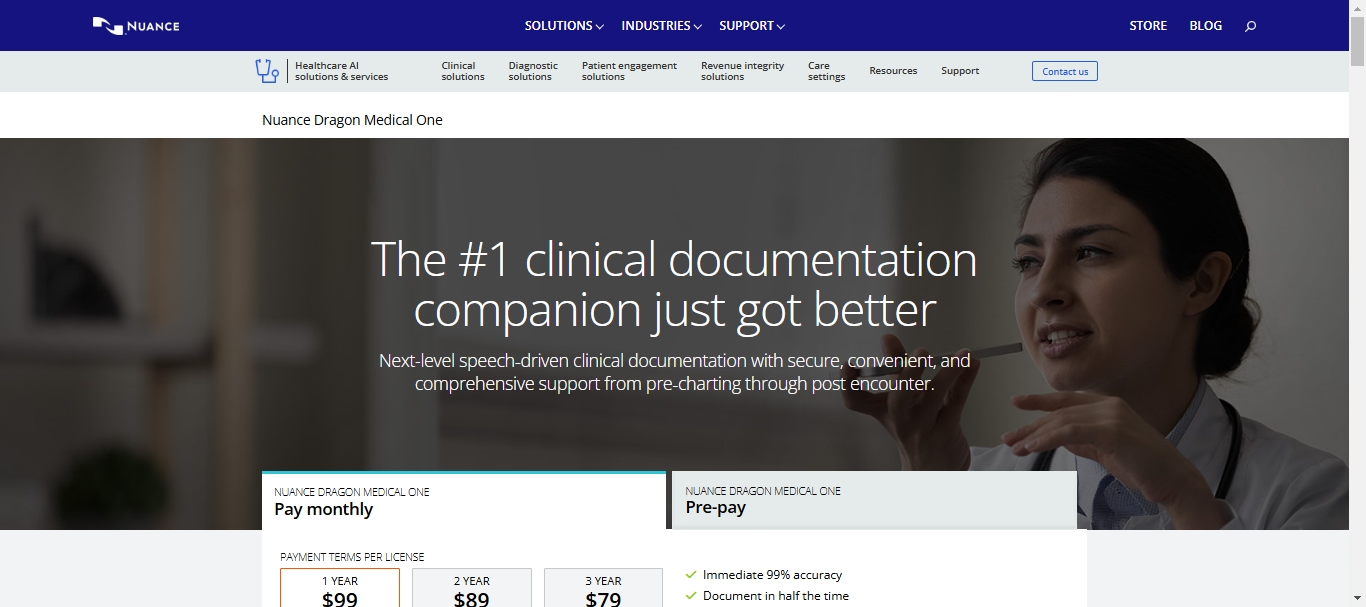
Dragon Medical One is a speech recognition software specifically designed for the healthcare industry. It is known for its specialized medical vocabulary, making it an excellent choice for professionals who must accurately transcribe complex medical terminology.
One of the key benefits of Dragon Medical One is its seamless integration with electronic health records (EHRs), allowing healthcare providers to efficiently input patient information directly into their digital systems. This integration helps streamline workflows, reduce manual data entry, and improve documentation accuracy.
It's also important to consider factors like ease of use and cost-effectiveness when choosing a dictation solution. Transkriptor, for instance, offers a more user-friendly interface that can be easier to navigate for those who do not require the extensive medical vocabulary provided by Dragon Medical One.
Transkriptor is also a more cost-effective option, making it accessible to a wider range of healthcare professionals who need reliable transcription without the higher price tag.
Nuance Dragon Medical Practice Edition
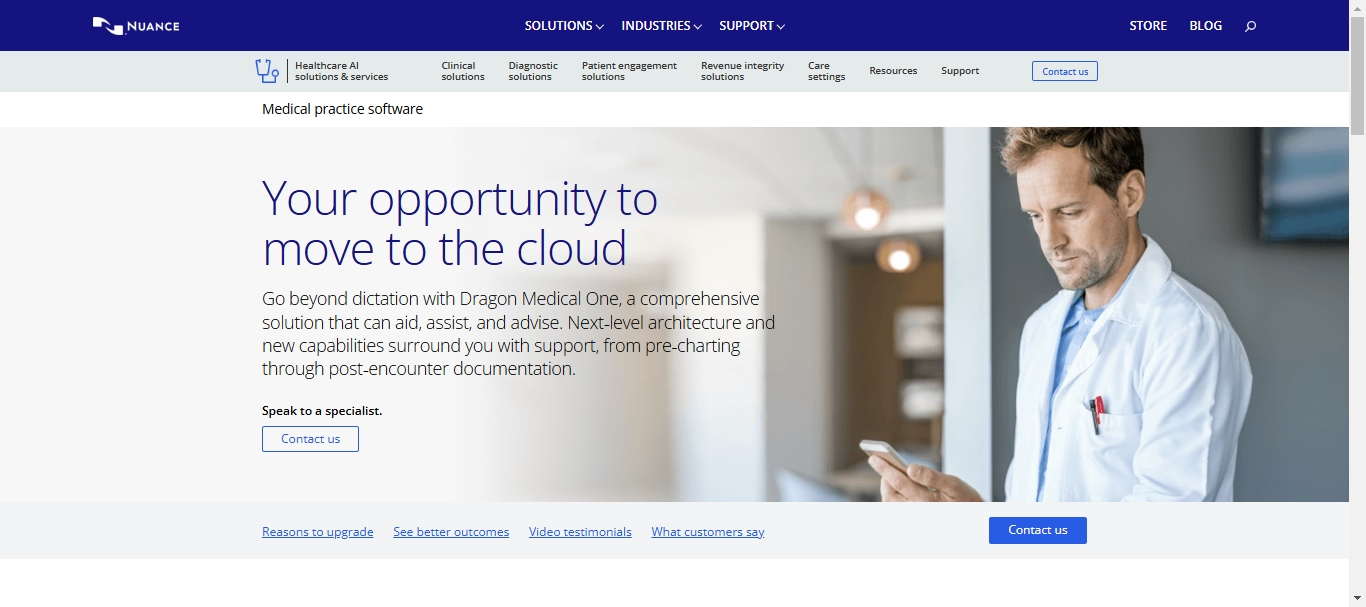
Nuance’s Dragon Medical Practice Edition is a specialized speech recognition software designed to meet the needs of smaller medical practices.
It offers precise medical terminology transcription, making it a valuable tool for healthcare providers who need to document patient interactions quickly and accurately. The software’s ability to integrate with electronic health records helps streamline the workflow, allowing doctors and staff to spend more time focusing on patient care rather than on administrative tasks.
One of the main benefits of Dragon Medical Practice Edition is its advanced understanding of complex medical vocabulary, which ensures that even the most specialized terms are captured accurately. This feature is particularly valuable in smaller practices, where maintaining precise patient records is crucial.
Dragon Medical Practice Edition is strong in handling specialized medical dictation. However, Transkriptor offers a more streamlined experience for general medical documentation.
Transkriptor’s user-friendly interface simplifies the transcription process, making it easy to convert speech into text quickly. It is also more cost-effective, making it a practical and efficient alternative.
M*Modal Fluency Direct: Advanced Speech Recognition
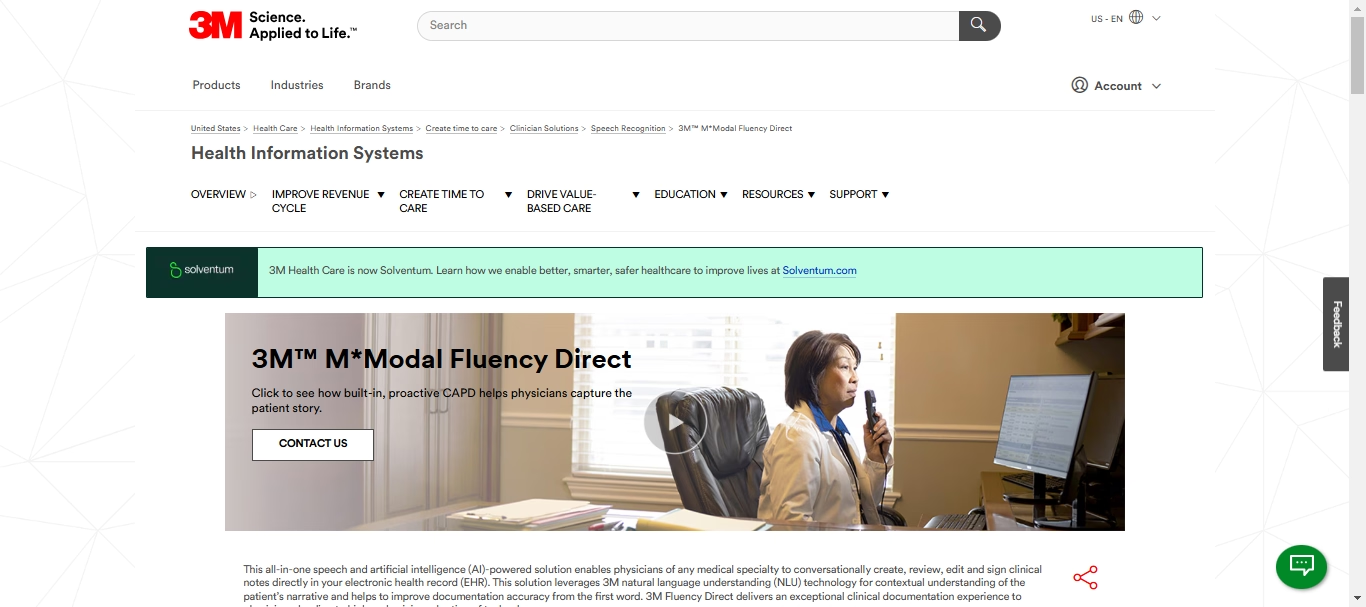
M*Modal Fluency Direct (or Solventum) is a speech recognition software known for its advanced capabilities in real-time medical dictation. It allows medical professionals to dictate directly into EHRs accurately and efficiently.
This software has advanced speech recognition technology that adapts to the user's voice, ensuring that even complex medical terminology is transcribed accurately. Its real-time dictation feature is particularly valuable for clinicians who need to document patient interactions quickly and precisely, allowing them to maintain detailed records without interrupting their workflow.
M*Modal Fluency Direct offers robust features for those deeply integrated into clinical settings, but it will be more complex and require a steeper learning curve.
Transkriptor presents an excellent alternative for professionals seeking a simpler, more accessible solution. It provides reliable speech-to-text functionality with an intuitive interface that makes it easy to use, even for those who are not tech-savvy.
Transkriptor is a cost-effective option that delivers the essential features for accurate and efficient medical dictation. It is a practical choice for those who need straightforward transcription without the complexity of more advanced tools.
Speechmatics: Versatile Speech-to-Text Tool
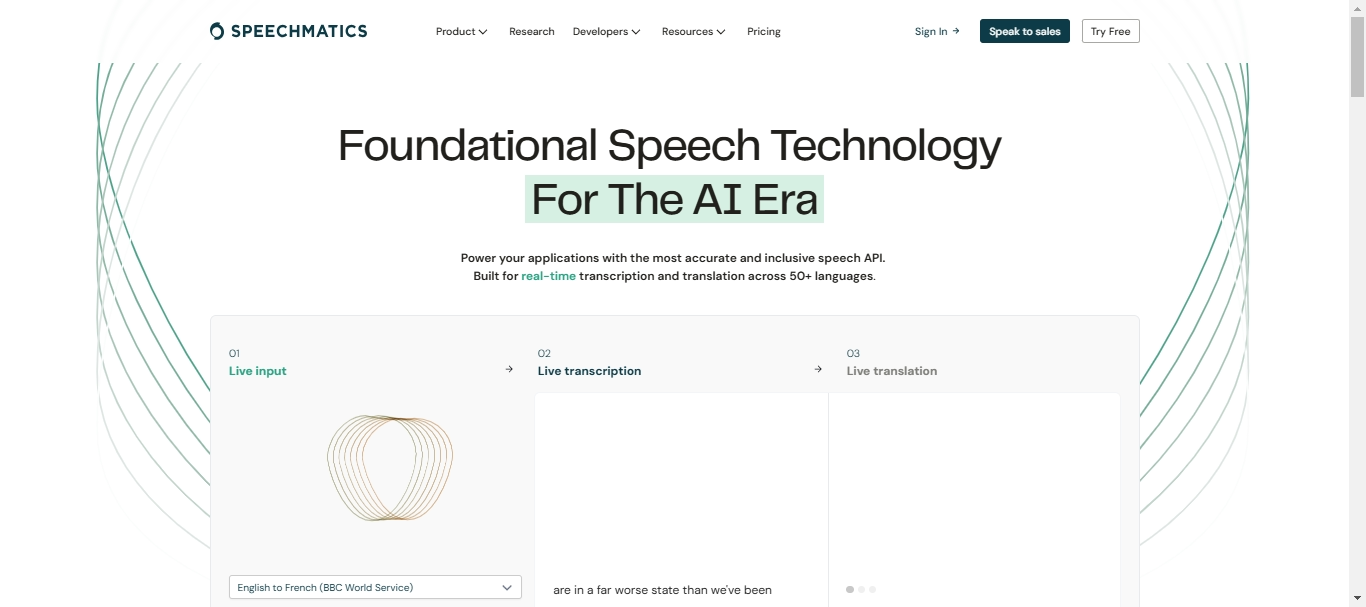
Speechmatics is a speech-to-text tool recognized for its adaptability across various healthcare settings. Its speech recognition engine can handle multiple accents and languages, making it a reliable choice for medical professionals in diverse environments.
Speechmatics is designed to deliver accurate transcriptions quickly, whether you’re documenting patient consultations, updating medical records, or transcribing clinical notes.
Its flexibility makes it suitable for a wide range of applications within the healthcare sector, providing support for professionals who need dependable transcription services in different contexts.
Speechmatics offers broad capabilities, but those specifically seeking a more focused medical dictation solution find Transkriptor a compelling alternative.
Transkriptor is designed with the needs of healthcare professionals in mind to simplify the transcription process. It provides the essential features required for accurate medical documentation without the added complexity of more generalized tools.
Step-by-Step Guide: How to Choose the Best Medical Dictation Software
Selecting the right medical dictation software is a key decision for any healthcare professional looking to streamline their documentation process. You’ll want to choose software that reliably captures complex medical terminology and produces clear, accurate text you can trust.
The right medical dictation software should empower you to work more effectively, ensuring you can provide the best possible care without being overwhelmed by administrative tasks, making it essential to understand dictation vs transcription .
Consider Accuracy and Medical Terminology
Accuracy is paramount when you are selecting medical dictation software. Even small errors in the healthcare field can have significant consequences, so choosing software that consistently delivers precise transcriptions is essential.
High accuracy in medical dictation software ensures that patient records are correctly documented and reduces the time spent on editing and corrections.
Supporting medical terminology is equally important. The software should be designed to recognize and accurately transcribe the wide range of terms and phrases used in different medical fields.
This includes everything from common medical terms to specialized vocabulary used in various branches of medicine. Software with robust medical terminology support will minimize errors and ensure that all documentation is precise and professional.
Choosing software with strong support for medical terminology means you can trust that your documentation will reflect the exact information you intended to record. This accuracy is vital for maintaining clear communication among healthcare providers and ensuring that patient records are complete and reliable.
Evaluate Integration with Healthcare Systems
One of the most important factors to consider when selecting medical dictation software is how well it integrates with your existing healthcare systems, particularly EHRs and other documentation platforms.
Effective integration means that the software can seamlessly transfer your dictated notes directly into the appropriate sections of the EHR, minimizing the need for additional steps or manual data entry.
A well-integrated system will allow you to dictate patient information and automatically organize and store it in the correct fields within the EHR. This saves time and reduces the risk of errors, ensuring that patient records are accurate and up-to-date.
It’s also important to consider how the software works with other systems you use, such as scheduling or patient management. Strong integration capabilities can help streamline your workflow, allowing you to focus more on patient care than administrative tasks.
Evaluating how well medical dictation software integrates with EHRs and other healthcare systems is crucial. It not only improves efficiency but also enhances the accuracy and accessibility of patient records.
Assess User Experience and Support
Evaluating user experience and support is key to ensuring when you are choosing medical dictation software.
A user-friendly interface can make all the difference in how quickly and effectively you can incorporate the software into your daily routine. Look for a solution that is intuitive, easy to navigate, and requires minimal training to get started.
The more straightforward the software, the less time you'll spend figuring out how to use it, allowing you to focus on what matters most—patient care.
Reliable customer support is another critical factor. Even the best software can encounter issues, and when that happens, you need a support team that is responsive and knowledgeable. Quick and effective assistance can minimize downtime and help you resolve any problems without disrupting your workflow.
Transkriptor excels in both of these areas. It offers an intuitive interface that healthcare professionals can start using with ease. The platform is designed to be simple yet powerful, making it accessible for users at all levels of tech-savviness.
Transkriptor also provides robust customer support, ensuring that help is always available when you need it. This helps you integrate dictation into your practice smoothly and efficiently, enhancing your overall productivity.
Best Practices for Using Medical Dictation Software
It's important to follow some best practices that can help maximize efficiency and accuracy to get the most out of medical dictation software.
First, ensure you're using clear and concise language when dictating. This helps the software accurately convert your voice to text in medical documentation, reducing the need for edits later on. Speaking steadily and enunciating medical terms clearly can also improve transcription accuracy.
Regularly review and update your software’s vocabulary settings. Many medical dictation tools allow you to customize the software to better recognize specific medical terminology and phrases you frequently use. This personalization can significantly enhance the software's ability to accurately transcribe complex medical language.
Another key practice is to always proofread the transcription before finalizing it. While advanced software like Transkriptor is highly accurate, a quick review ensures that any minor errors or omissions are caught before they make it into the patient’s medical record.
You can ensure that your transcription in medical dictation software is both efficient and reliable, helping you maintain accurate and thorough medical documentation by following these tips.
Using Dictation Software for Meeting Notes in Healthcare Settings
Medical dictation software is essential for patient documentation and a powerful tool for transcribing meeting notes and other critical communications in healthcare settings.
This software ensures that every detail of your discussions is accurately recorded and easily accessible for later review by converting audio to text for healthcare meetings.
Using dictation software for meeting notes in healthcare settings allows healthcare professionals to focus fully on the conversation at hand without the distraction of taking notes. This real-time transcription capability captures all the important points, decisions, and action items discussed during the meeting, creating a reliable record that all team members can reference.
This technology is particularly valuable in multidisciplinary meetings where treatment plans and collaborative decisions are discussed. Having an accurate transcript ensures that all healthcare providers involved in a patient’s care are on the same page, which is crucial for delivering coordinated and effective treatment.
Dictation software helps streamline communication by providing a written record that can be easily shared with colleagues, reducing the risk of miscommunication and ensuring that everyone is informed. You can improve your documentation's efficiency, accuracy, and overall quality by using audio to text for healthcare communications.
Conclusion
Medical dictation software offers significant benefits by streamlining documentation, enhancing accuracy, and saving time for healthcare professionals.
Tools like Transkriptor are essential in today’s medical environment, allowing you to focus more on patient care coordination and less on paperwork. You can improve the efficiency and quality of your documentation processes by integrating these solutions into your practice, focusing more on patient care coordination .
Explore how Transkriptor can make a difference in your daily workflow, sign up today , and take the first step toward more effective and reliable medical record-keeping.

